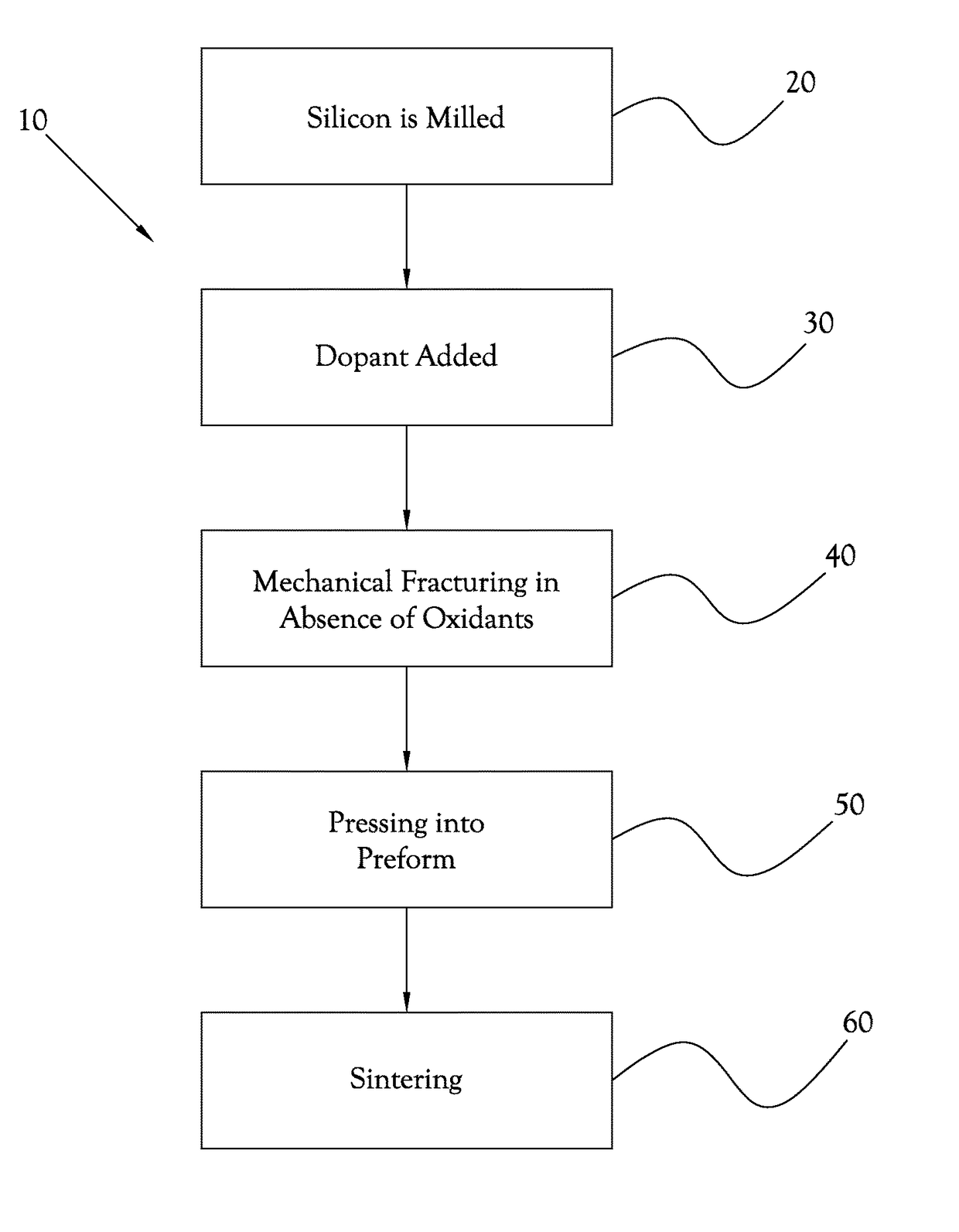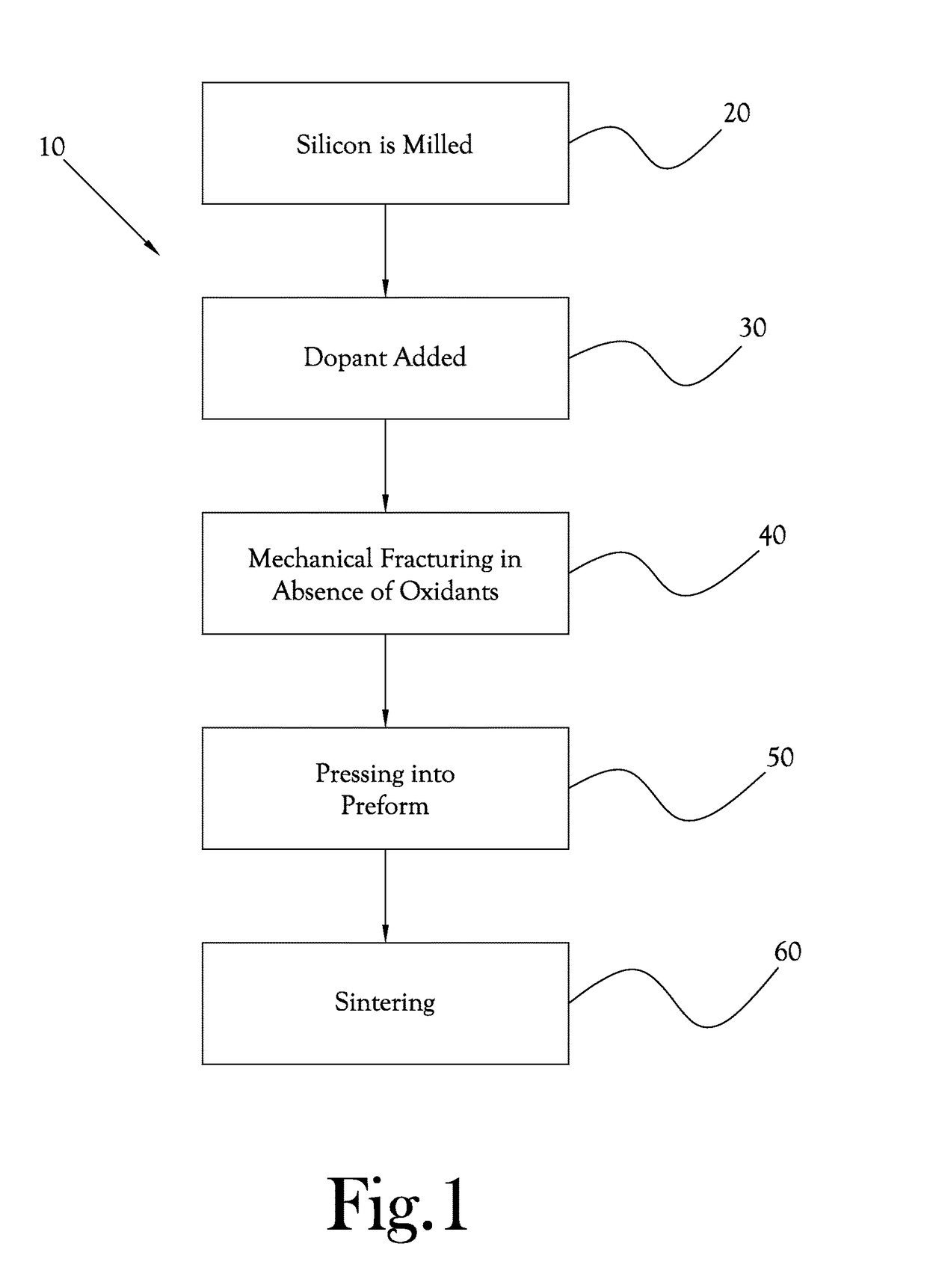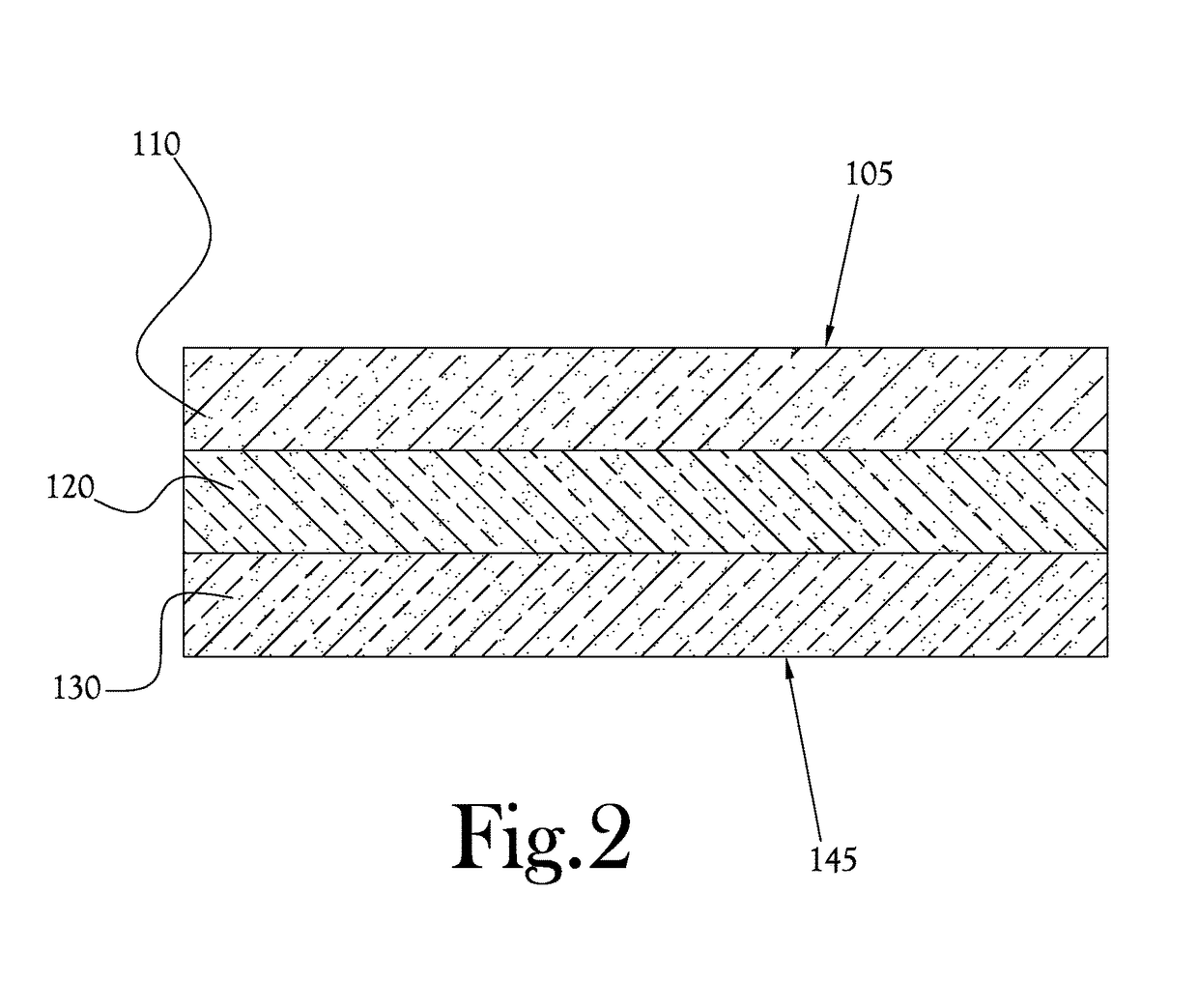Nano-structured porous thermoelectric generators
a porous, nano-structure technology, applied in the direction of thermoelectric device junction materials, thermoelectric device manufacturing/treatment, etc., can solve the problems of high material cost, high production cost, use of rare elements, etc., to achieve safe and economical method of nano-sizing silicon, high seebeck coefficient, and high work capability
- Summary
- Abstract
- Description
- Claims
- Application Information
AI Technical Summary
Benefits of technology
Problems solved by technology
Method used
Image
Examples
Embodiment Construction
[0053]Disclosed herein are methods and processes to fabricate thermoelectric materials and more particularly to methods and processes to fabricate doped silicon-based semiconductive materials to use as thermoelectrics in the production of electricity from recovered waste heat. In some example embodiments, the present invention comprises a thermoelectric material that incorporates a silicon-based semiconductor material.
[0054]Also disclosed herein are methods and processes that encompass the use a high-purity, properly-doped, nanostructured, porous silicon milled to a particle size less than a few microns, and sinter into a thick structure that will achieve a very high efficiency converting heat to electricity.
[0055]In various example embodiments of the present general inventive concept, fabrication of effective silicon-based thermoelectric devices involves: doping for high electrical conductivity for both P and N type by doping from column III and column V of the periodic chart respe...
PUM
| Property | Measurement | Unit |
|---|---|---|
| median size | aaaaa | aaaaa |
| temperature | aaaaa | aaaaa |
| diameter | aaaaa | aaaaa |
Abstract
Description
Claims
Application Information
 Login to View More
Login to View More - R&D
- Intellectual Property
- Life Sciences
- Materials
- Tech Scout
- Unparalleled Data Quality
- Higher Quality Content
- 60% Fewer Hallucinations
Browse by: Latest US Patents, China's latest patents, Technical Efficacy Thesaurus, Application Domain, Technology Topic, Popular Technical Reports.
© 2025 PatSnap. All rights reserved.Legal|Privacy policy|Modern Slavery Act Transparency Statement|Sitemap|About US| Contact US: help@patsnap.com



